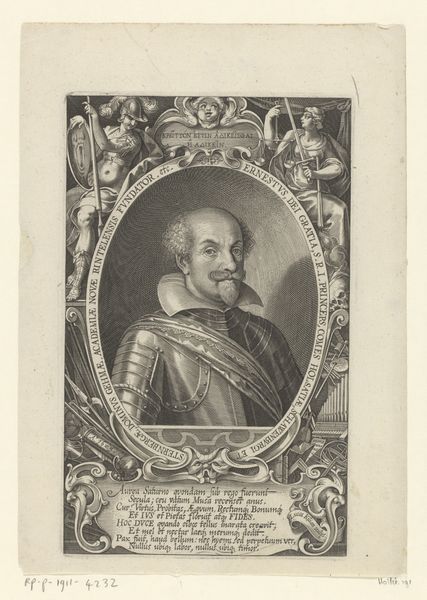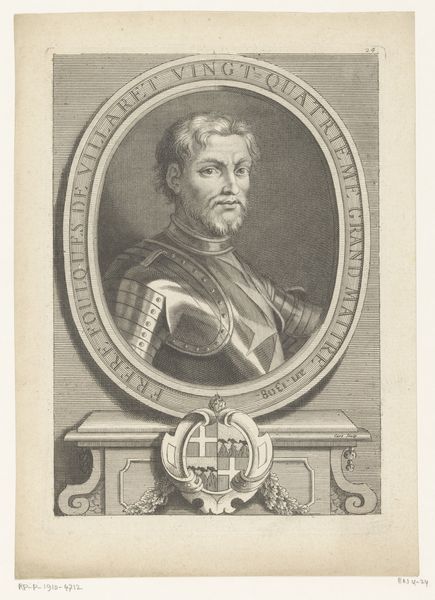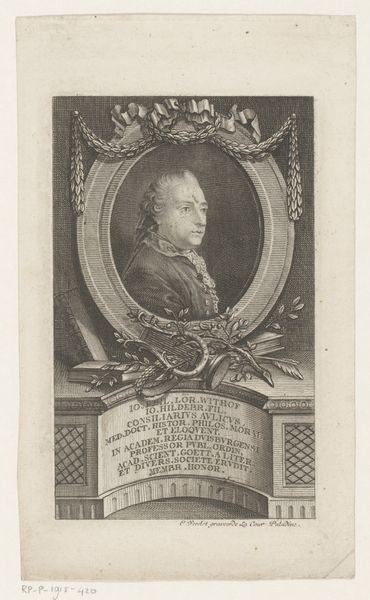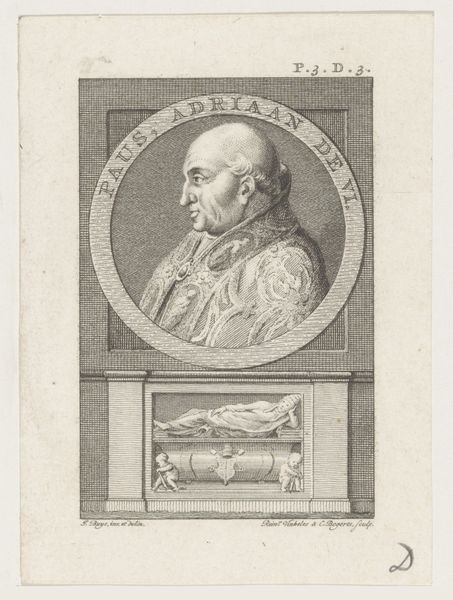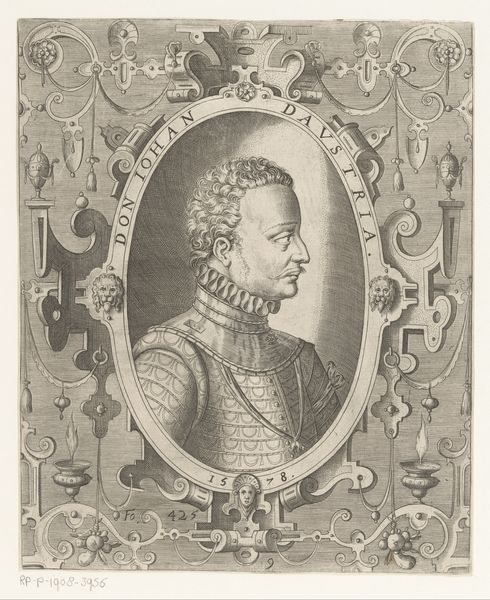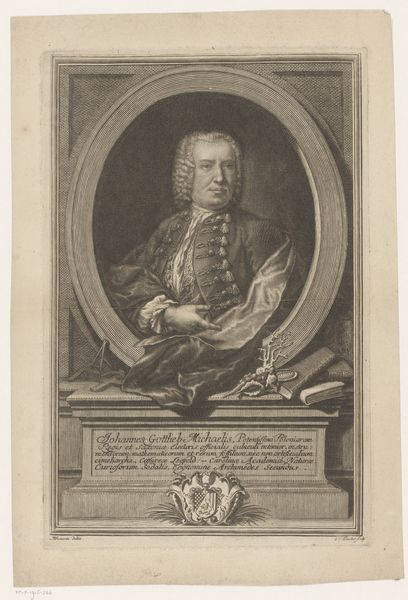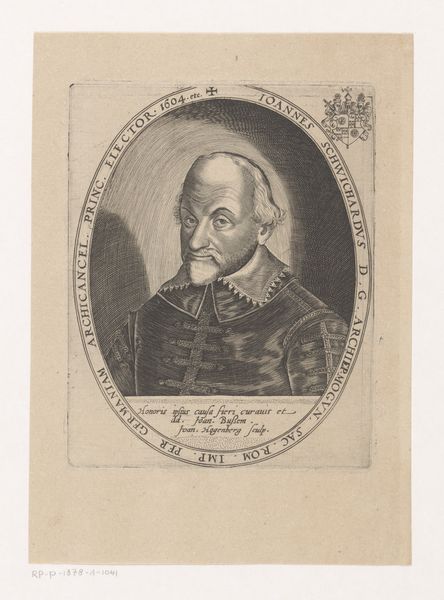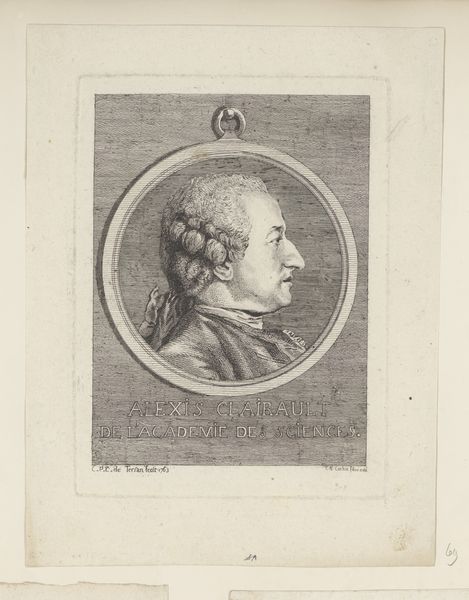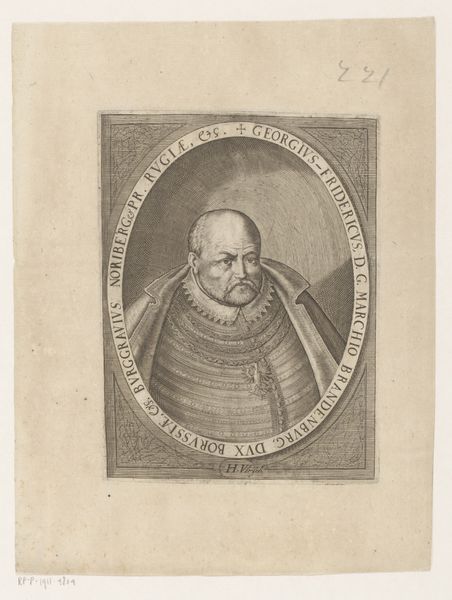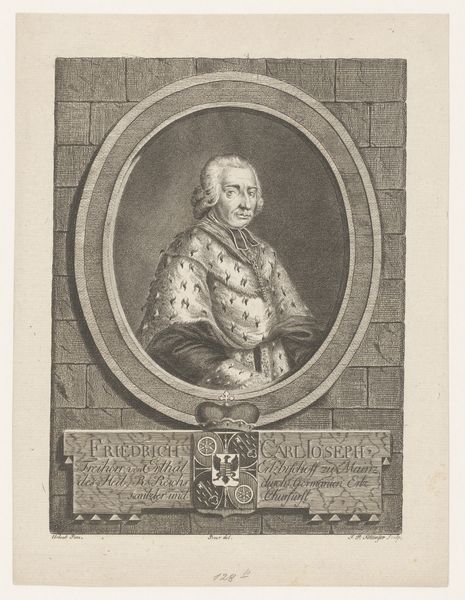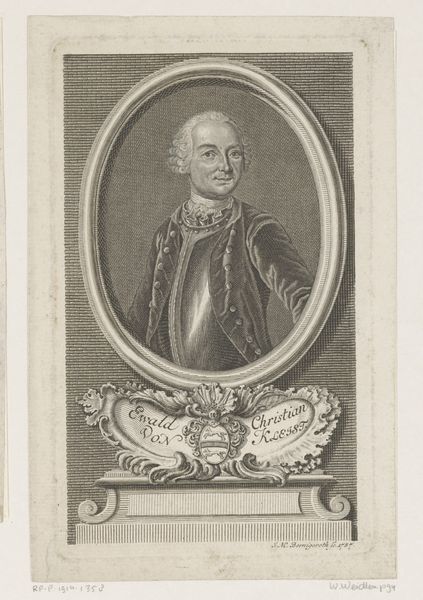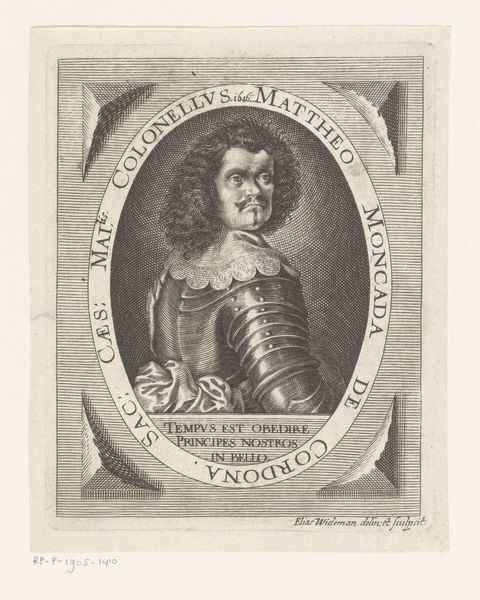
engraving
#
portrait
#
baroque
#
figuration
#
line
#
history-painting
#
engraving
Dimensions: height 214 mm, width 153 mm
Copyright: Rijks Museum: Open Domain
This is Laurent Cars's engraving of Gilbert d'Aissailly, created in France, likely in the first half of the 18th century. It's a formal portrait, presenting d’Aissailly in profile, clad in armor, and framed by an inscription denoting his status as the fourth Grand Master. The image operates within a visual language of power and nobility. Armor, of course, signified military prowess and aristocratic status at this time. But by the 1700s, its use in portraits was more about invoking historical associations than reflecting contemporary warfare. The formal inscription and heraldic shield reinforce this image of lineage and authority. This piece also speaks to the institutional role of portraiture. It's not just about likeness; it's about constructing and communicating social identity within a specific cultural context. As art historians, we can look at this engraving alongside other portraits of the era, consult genealogical records, and analyze the visual codes employed to understand its full historical resonance. This helps us decode the complex interplay between art, identity, and social structure.
Comments
No comments
Be the first to comment and join the conversation on the ultimate creative platform.
